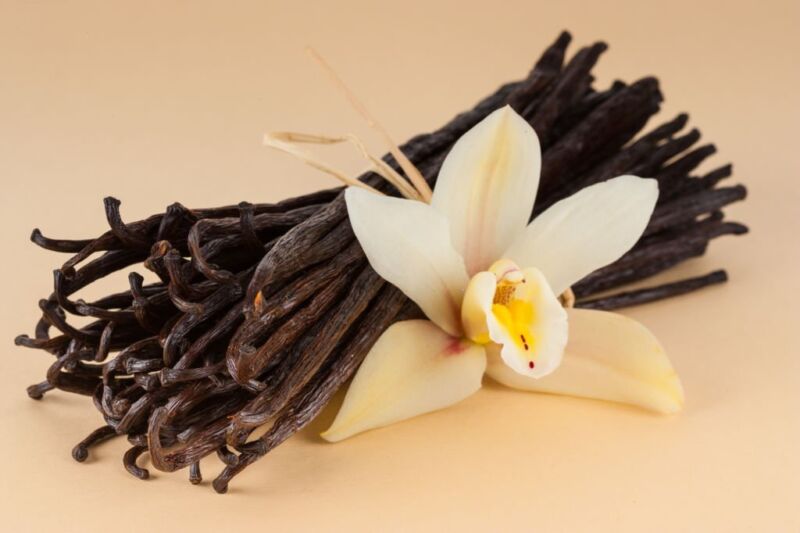Can You Really Freeze Vanilla Beans Without Ruining Them?
Vanilla beans are one of my favorite ingredients to keep stocked in my pantry. There’s nothing better than a homemade vanilla extract or a recipe that calls for the whole bean. But quality vanilla beans can be pricey.
I’ll often buy vanilla beans in bulk when I find a good deal, only to end up with more than I can use right away. Which leaves me wondering: can you freeze vanilla beans to save the extras for later?
The Allure of Freezing Those Extra Vanilla Beans
When I first started buying vanilla beans in bulk, freezing the extras seemed like an easy way to save them for future use.
I could buy a big batch on sale, portion out what I needed, and freeze the rest in an airtight bag or container. Then I’d have vanilla beans ready whenever a recipe called for them. No more paying full price for just a couple beans!
But as much as I wanted freezing vanilla beans to work, I had some doubts. I worried that freezer burn or excess moisture would ruin their flavor.
Were my frozen vanilla beans just going to end up a wasted, shriveled mess? Or could frozen storage actually preserve them beautifully?
Time for some research to find out! Here’s what I discovered about successfully freezing vanilla beans for long-term use.
The Pros of Freezing Vanilla Beans
Freezing vanilla beans does offer some real advantages:
- Lets you save and store excess beans for up to 1 year. Buying in bulk means having more beans than you can use quickly. Freezing gives you an extended window to use them in recipes.
- Maintains vanilla aroma and flavor. Properly frozen beans retain their essence beautifully. No noticeable loss compared to fresh.
- Prevents drying out. The freezer is less prone to moisture loss than some other storage methods.
- Limits mold risk. Very slow freezer temp prevents mold growth that develops quicker in the fridge.
So freezing vanilla beans can absolutely keep them fresh and usable for many months, as long as proper precautions are taken.
The Cons of Freezing Vanilla Beans
However, there are some downsides to look out for when freezing vanilla beans:
- Risk of moisture damage. Any excess moisture or ice condensation can quickly mold and ruin frozen beans.
- Potentially shorter shelf life. Constant thawing and re-freezing beans reduces how long they last compared to other cool storage.
- Careful thawing/drying required. To avoid mold after thawing, beans need thorough drying before use.
- More hands-on process. Freezing prep and post-thaw drying takes more active effort than some storage methods.
So while freezing vanilla beans is possible, it requires careful handling to get right. Next, let’s look at the best practices for successful frozen storage.
How to Freeze Vanilla Beans the Right Way
To get the most out of frozen vanilla beans, follow these tips:
- Seal beans airtight. Use vacuum sealer bags or double freezer bags with all air pressed out. This prevents freezer burn and moisture.
- Label with date/variety. Track freezer duration and use older beans first. Organize by type too.
- Dry beans immediately after thawing. Remove from packaging right away and dry on towels before condensation forms.
- Allow beans to dry thoroughly after thawing. Give them at least 4-5 hours drying time on paper towels to remove moisture.
- Gently unroll frozen beans before drying. Unfurling them exposes more surface area to dry out.
Taking those simple precautions helps ensure frozen vanilla beans stay fresh and flavorful after thawing.
Thawing and Drying Vanilla Beans
Once your frozen vanilla beans are ready to use, proper thawing and drying is critical:
- Unroll beans in single layer on towels. Lay them flat with space between to air dry thoroughly.
- Let sit for at least 4-5 hours, up to 24. More time equals more moisture evaporated after thawing.
- Rotate beans during drying. Expose all sides to air to prevent damp spots. Dab away visible moisture droplets.
- Transfer to airtight container after drying. Glass jars or sealed plastic works. Store somewhere cool and dark.
With careful thawing and drying methods, your beans end up just as fresh as the day they were frozen.
Alternatives to Freezing Vanilla Beans
While freezing vanilla beans can work with effort, you may also want to consider these simpler long-term storage options:
- Cool, dark pantry storage. Beans keep for 2-3 years in airtight glass jars in the pantry. Darkness prevents light damage.
- Airtight plastic containers. Clear plastic lets light in, so opt for solid containers. Keeps pantry beans fresh for 2-3 years.
- “Air out” beans monthly. Opening jars or bags re-distributes the oils and prevents mold growth.
- Low-humidity environments. Basements or wine coolers offer stable storage with minimal moisture.
So even without freezing vanilla beans, you have great alternatives to keep beans fresh for a few years.
The Bottom Line on Freezing Vanilla Beans
While freezing vanilla beans lets you store a bulk purchase for extended use, it does require careful handling. With the right sealing and thorough drying methods, frozen beans retain quality for up to a year. But cool, dark pantry storage also keeps beans fresh for a few years with less maintenance.
Whichever storage method you choose, proper techniques prevent moisture and light damage. Then your valued vanilla beans can continue flavoring your baked goods for the long haul!
